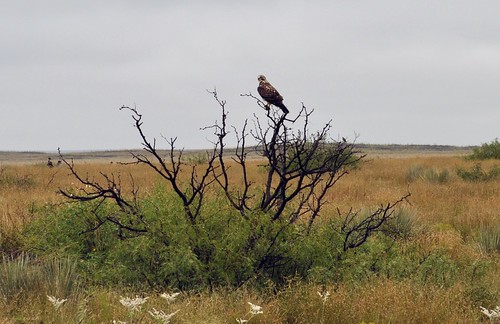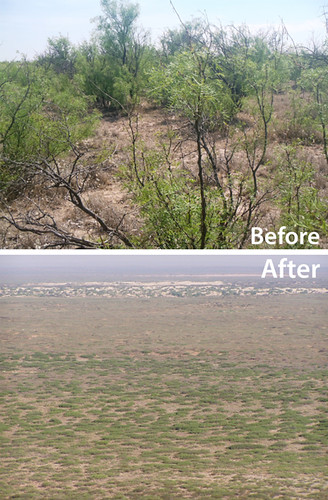
For many, one of the New Year’s first big chores is to remove a tree from inside their home. Trees, beautiful and useful as they are, do not belong everywhere. Such is the case with trees and other woody species that are expanding into the Western grasslands.
Over the years, woody species like juniper, pinyon pine, redcedar and mesquite have encroached on grassland and sagebrush ecosystems, altering these landscapes and making them unsuitable for native wildlife like the lesser prairie-chicken and greater sage-grouse. Encroaching conifers also degrade rangelands for agricultural producers whose livestock rely on nutritious forage.
A new “Science to Solutions” report from the Lesser Prairie-Chicken Initiative (LPCI) – a partnership led by USDA’s Natural Resources Conservation Service (NRCS) – shows how prairie chickens avoid mesquite. While anecdotes and casual observations have long indicated the iconic bird’s avoidance of mesquite, this first-of-a-kind study confirms it.
According to the study, prairie chickens mostly avoid areas with 15 percent mesquite canopy cover, and completely avoid areas with 50 percent cover. Overgrazing, climate change and 100 years of fire suppression have allowed mesquite and other invasive species to overrun open landscapes, which is bad for wildlife and native rangelands as well.
Another problem for lesser prairie chicken in these areas – mesquite provides nesting areas for predatory birds, which eat lesser prairie chickens, their young and their eggs. By tracking prairie chickens, the study found that even leafless, dead mesquites are enough to keep chickens away. Mesquite’s impacts on prairie chickens in the southern Great Plains is very similar to the redcedar encroachment that affects prairie chickens in other areas.
New Mexico State University, the Bureau of Land Management and NRCS collaborated on this study, which contributes to a growing body of science demonstrating the impacts of woodland expansion on grassland and sagebrush wildlife.
For example, a different report released this week by the NRCS-led Sage Grouse Initiative (SGI) shows 86 percent of sage grouse hens in Utah avoided conifer-invaded habitats when nesting. The report also revealed that the hens that used restored, conifer-free habitats were more likely to successfully raise their broods.
These two studies appear with 13 others in the latest edition of Rangeland Ecology & Management, the scientific journal of the Society for Range Management (SRM). This special issue, which features cutting-edge research on woodland expansion, is also the focus of an upcoming symposium at the SRM's annual conference at the end of this month.
NRCS uses science to target the best places and ways to work with ranchers to remove woody species and improve the health of native ranchlands. Since 2010, ranchers have made wildlife-friendly improvements to more than 6 million acres in the West. By adopting these conservation practices, they have also improved the forage on their land.
Learn more about these findings by downloading the LPCI report. This report is part of the Science to Solutions series offered through NRCS, LPCI and SGI. Additionally, SRM’s full-day symposium on woodland expansion on Jan. 31 will be livestreamed and free to watch on SGI's website. Click here to see the schedule of talks.

